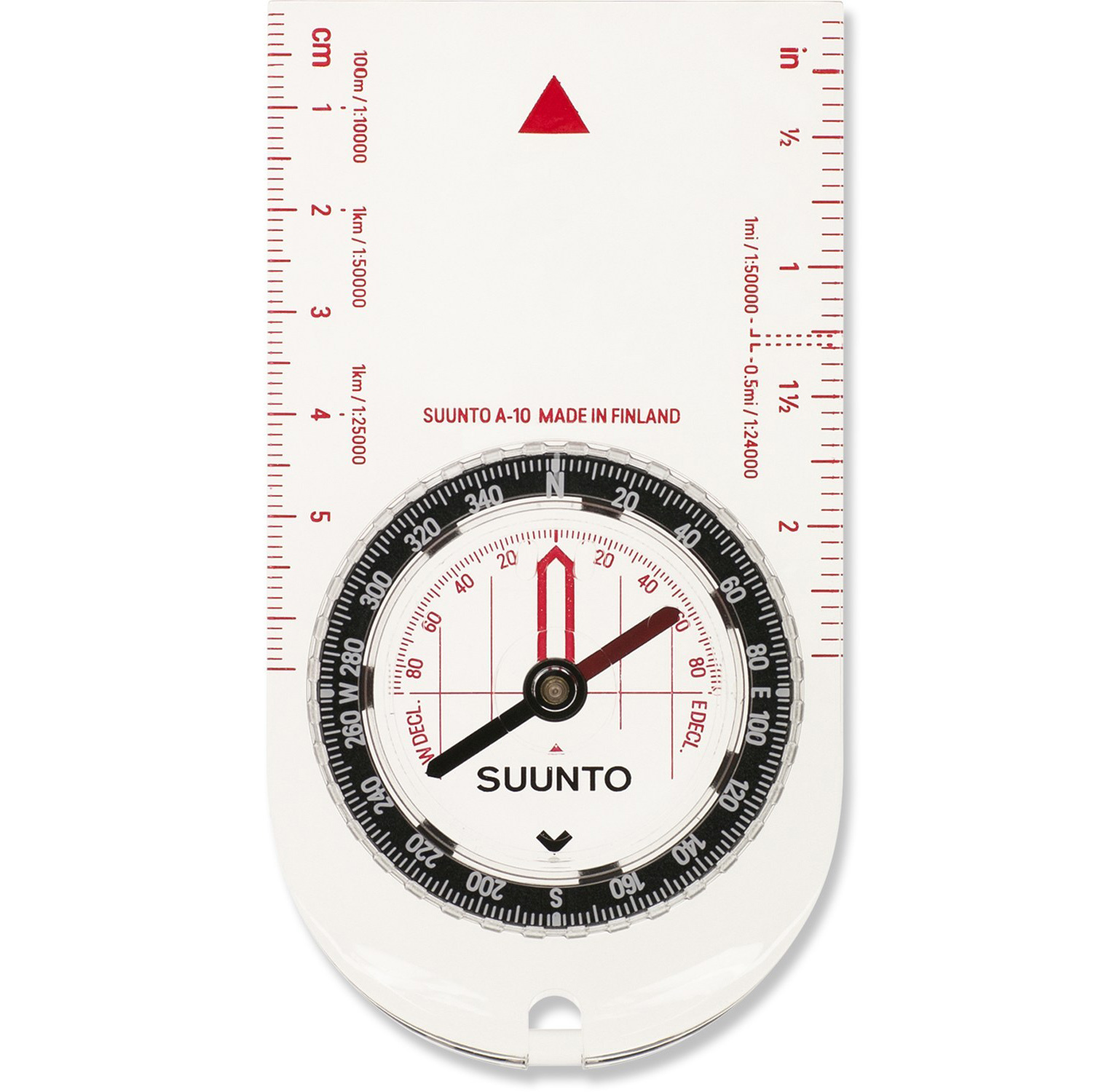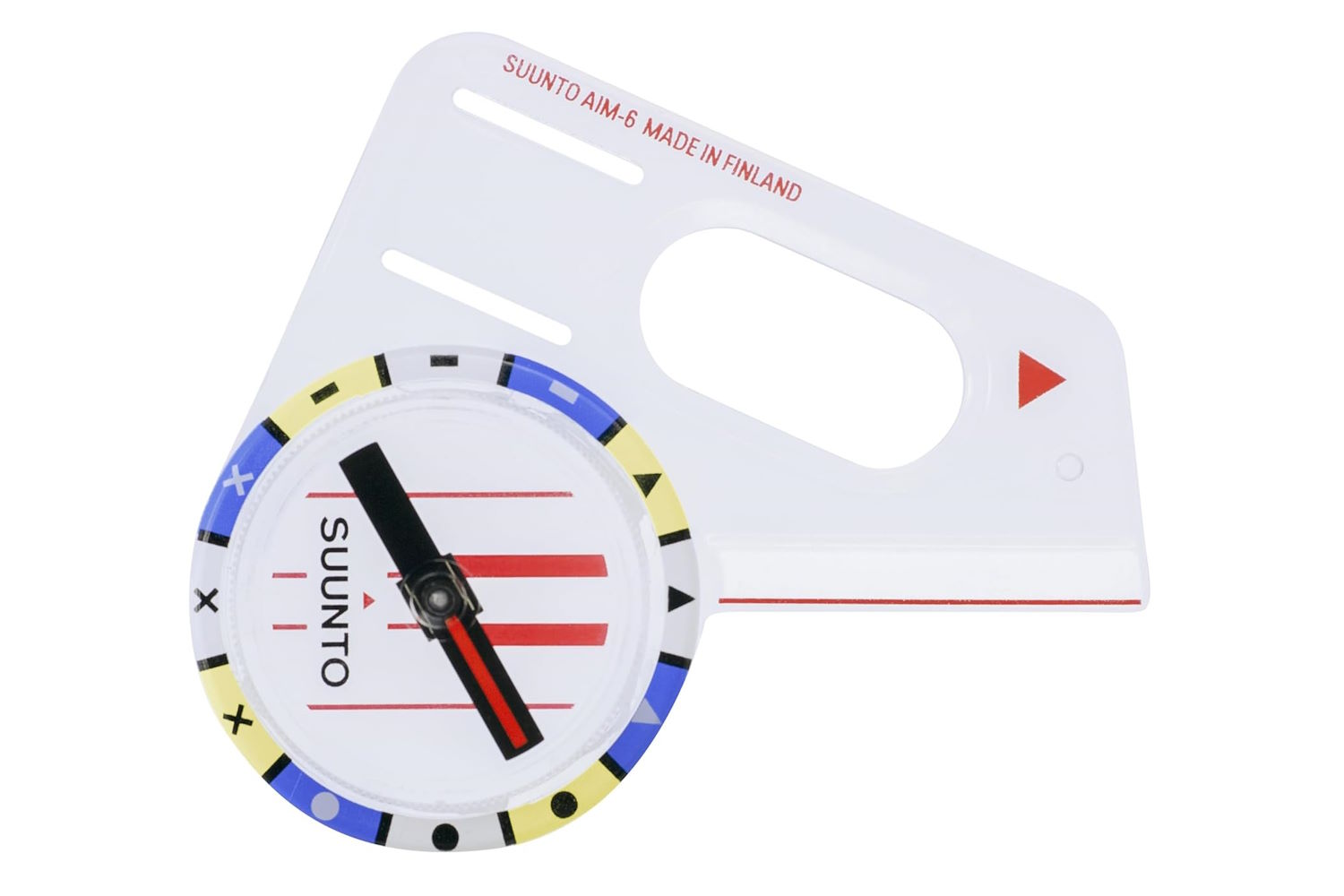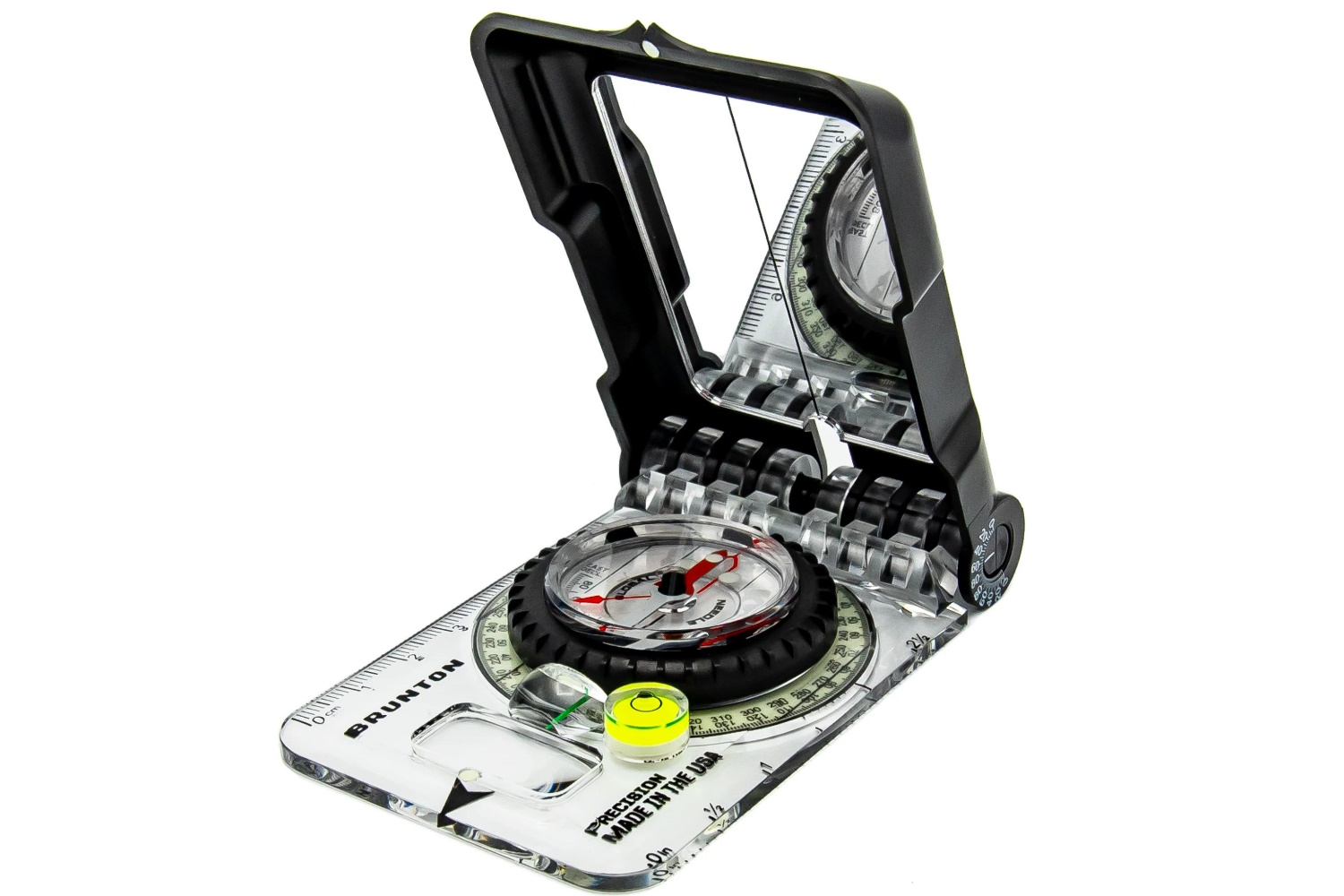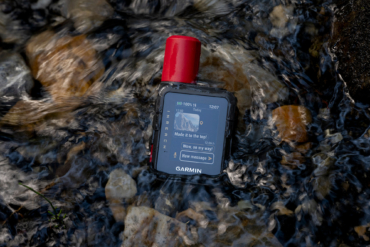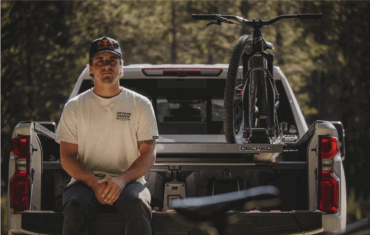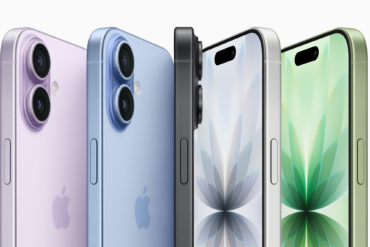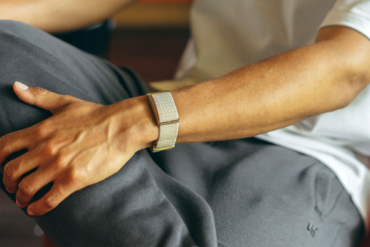Even in this technology-filled world, a good outdoors person knows the importance of having the best compass possible when adventuring outside.
At GearJunkie, our team is composed of arctic explorers, competitive orienteers, and accomplished long-distance thru-hikers. We’ve ventured far beyond the bounds of well-traveled trails and 5 G-LTE. We rely on compasses to maintain our bearings and remain in touch with our path of travel in white-out blizzards, dense forests, and barren, featureless deserts.
A reliable compass can be the difference between efficient backcountry travel and potential disaster. Through rigorous testing of dozens of compasses, the selections of this list have proven themselves as bona fide navigation tools fit for far-flung adventures.
We’ve found the best compasses to fit every budget and use. Whether you want the reliability and performance of our overall pick, the Suunto M-3 NH Compass, or the ease of the SUUNTO A-10 NH, our budget-friendly option, we have you covered.
Editor’s Note: We updated our Best Compasses Guide on May 15, 2025, by adding the Brunton Tru Arc 15 Compass, our top pick for professionals.
The Best Compasses of 2025
Suunto M-3 NH Compass
- Weight: 1.6 oz.
- Increments: 2 degrees
- Dimensions: 4.72″ x 2.4″ x 0.55″
Pros
- Reliable
- Easy to adjust declination
- Durable
- Luminescent markings
- Handy wristlock lanyard
Cons
- Small degree markings on the device can be hard to read, especially in low light
SUUNTO A-10 NH Compass
- Weight: 1.06 oz.
- Increments: 2 degrees
- Dimensions: 4.09" x 2.2" x 0.39"
Pros
- Light
- Easy to use
- Accurate
Cons
- No magnification
Coghlan’s Four Function Whistle
- Weight: 1.75 oz.
- Increments: Unknown
- Dimensions: 3.35″ x 1.18″ x 0.98″
Pros
- Yellow color makes it easy to find
- Shrill whistle makes your kids easy to find
Cons
- No compass features besides finding magnetic north
SUUNTO AIM-6 NH
- Weight: 0.95 oz.
- Increments: 2 degrees
- Dimensions: 3.15" x 2.76" x 0.43“
Pros
- Quick read
- Attaches to thumb for use on-the-go
Cons
- Specialized for racers
- No measurements or sighting tools
Brunton Tru Arc 15 Compass
- Weight: 3.2 oz.
- Increments: 1 degree
- Dimensions: 4”x 2.5”x 0.6”
Pros
- Balanced for use in both hemispheres
- Isn’t prone to interference
- Includes inclinometer
- Map magnifier and numbers are magnified
- Lights up
- Sturdy
Cons
- Bearings are difficult to read
- Setting declination is difficult
Other Compasses To Keep You On Track
- Weight: 2 oz.
- Increments: 2 degrees
- Dimensions: 2.64″ x 1.85″ x 0.87″
Pros
- Compact
- Durable
- Balanced for use in all hemispheres
Cons
- More expensive than others on this list
- Weight: 1.6 oz.
- Increments: 2 degrees
- Dimensions: 8.23″ x 3.9″ x 0.67″
Pros
- Excellent price
Cons
- No declination feature, no direction box
- Weight: 2.5 oz.
- Increments: 2 degrees
- Dimensions: 3.9″ x 2.5″
Pros
- Global needle
- Protective case doubles as mirror and sighting notch
Cons
- Lid snap takes a good amount of force to lock
Compass Comparison Table
| Compass | Price | Weight | Increments | Dimensions |
| Suunto M-3 NH Compass | $65 | 1.6 oz. | 2° | 4.72″ x 2.4″ x 0.55″ |
| SUUNTO A-10 NH Compass | $24 | 1.06 oz. | 2° | 4.09″ x 2.2″ x 0.39″ |
| Coghlan’s Four Function Whistle | $10 | 1.75 oz. | N/A | 3.35″ x 1.18″ x 0.98″ |
| SUUNTO AIM-6 NH | $70 | 0.95 oz. | 2° | 3.15″ x 2.76″ x 0.43“ |
| Brunton TruArc 15 | $80 | 3.2 oz. | 1° | 4”x 2.5”x 0.6” |
| SUUNTO MB-6G Global Compass | $115 | 2 oz. | 2° | 2.64″ x 1.85″ x 0.87″ |
| TurnOnSport Orienteering Compass | $12 | 1.6 oz. | 2° | 8.23″ x 3.9″ x 0.67″ |
| SUUNTO MC-2 Global Compass | $95 | 2.5 oz. | 2° | 3.9″ x 2.5″ |
How We Tested the Best Compasses
The GearJunkie team is composed of hunters, anglers, climbers, backpackers, and paddlers. When our adventures take us away from the beaten path, reliable compasses become essential tools. Our founder, Stephen Regenold, is one of the top adventure racers in the country and an avid orienteer. As such, he uses map-and-compass navigation extensively during race scenarios and has experience with many different product options.
We tested the ones on this list while recreating in the field. Like all navigators, we prefer accurate, durable, and intuitive models. While roaming between waypoints and hugging long-distance bearings through featureless terrain, we paid careful attention to each product’s precision, durability, versatility, readability, and overall value. The compasses on this list held up to our scrutiny with flying colors. They’re the best of the best.
As new ones hit the market in future seasons, we’ll be sure to test them in consideration for this product roundup. And if you want to get more digital with your navigation solutions, check out our guide on the Best Handheld GPS units.

Buyer’s Guide: How to Choose a Compass
Compass Types
There are three main types of compasses: the basic compass, the sighting compass, and the baseplate (or orienteering) compass. Some compasses contain elements of all three.
The basic compass has only one feature: a needle that points toward the magnetic north. Though it also has a whistle, this is the type of compass found in Coghlan’s Function Whistle, our top compass for kids. The basic compass is handy for any situation in which you only need to know your approximate direction. They tend to be inexpensive as well, so they can be useful for keeping as a spare.
Sighting compasses have flip-up lenses that allow users to get bearings from a distant object like a nearby peak. Put simply, use the sight notch to identify your desired location, adjust the bezel to align with the needle to identify the direction you need to go to get there, and then follow the heading.
Orienteering (baseplate) compasses are designed to be used with a map, as the base lays directly on the map for easy triangulation and orienting. Suunto’s M-3 D Leader has a baseplate with a magnifying lens and glow-in-the-dark markings that make it easy to use on a map, even in low light.
Many compasses, like the SUUNTO MC-2 Global Compass, combine a baseplate for map navigation and sighting accessories to combine the two types. This allows for whatever navigation method is most useful at any time.
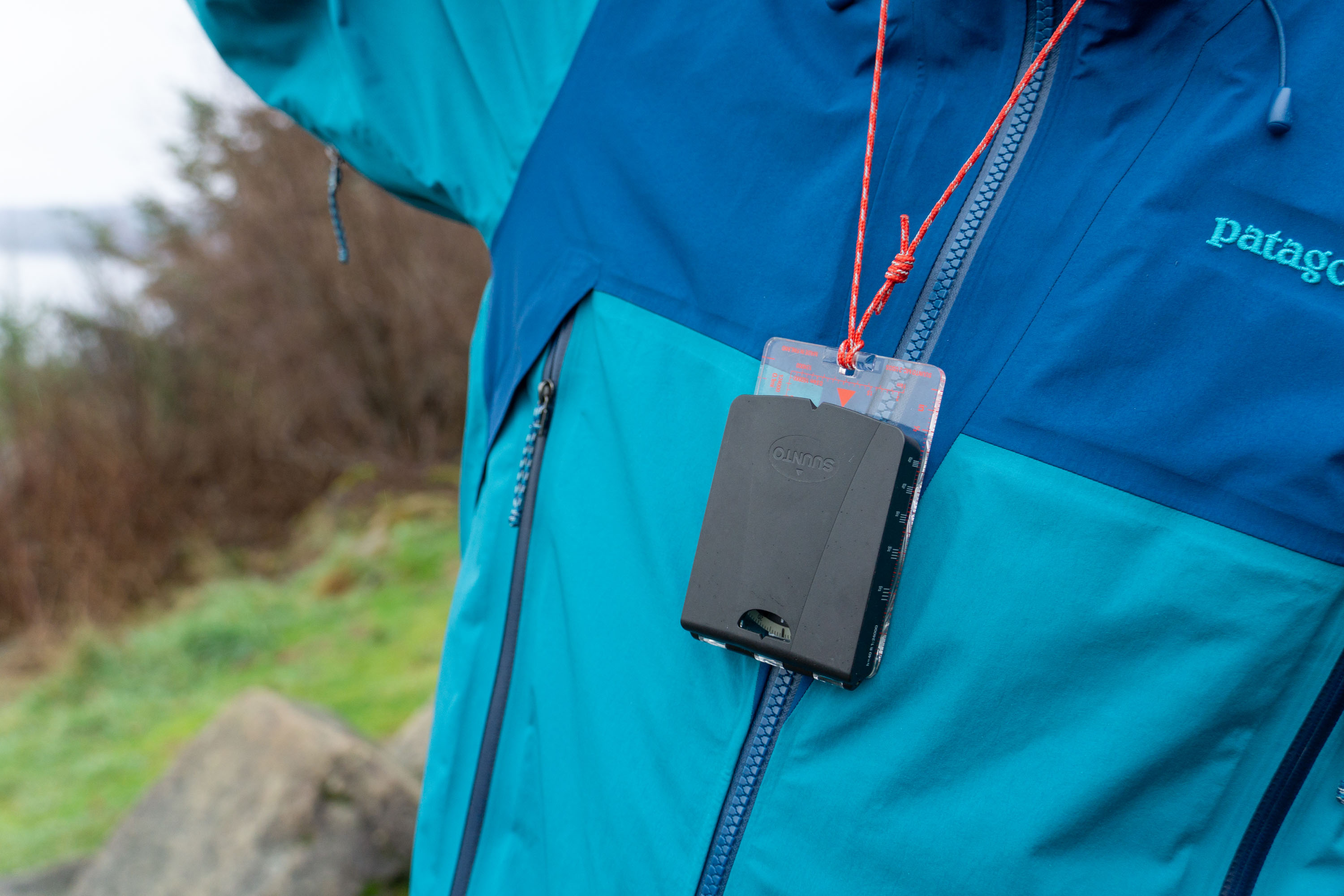
How to Use a Compass
The short lesson on compasses is very simple: The compass needle always points to magnetic north. With that knowledge, you can maintain a consistent direction of travel relative to north.
The longer version of compass use is much more nuanced and complicated. Check out our full explainer on how to use a compass here.

Basic Compass Features
By definition, a compass will have a magnetic needle that always points to the magnetic north. Beyond that, compasses can sport a bevy of features, from liquid-filled needle casings and rotating bezels to whistles and thermometers (some are more useful than others), generally depending on the price range.
A basic compass will do general direction-finding. But for more in-depth orienteering, you’ll want one with the following features:
Needle
A magnetic needle that always points north is the most basic and essential feature of any compass. One of the more important features of a good choice is a quick but stable needle that finds north fast and consistently, like the SUUNTO A-10.
Housing
The mounting case holds the needle. It’s often filled with liquid to allow the needle to float freely and find magnetic north quickly. The liquid also dampens the needle’s motion.
Baseplate
The mounting for the housing, a baseplate, is generally printed with tools that help find direction and distance. It provides a straight edge for identifying your location via triangulation.
Bezel
The bezel is a rotating ring that surrounds the housing. It is printed with direction indicators (N, S, E, W) and varying points in between. The SUUNTO MC-2 Global has a luminescent bezel, which means its easier to see in low light.
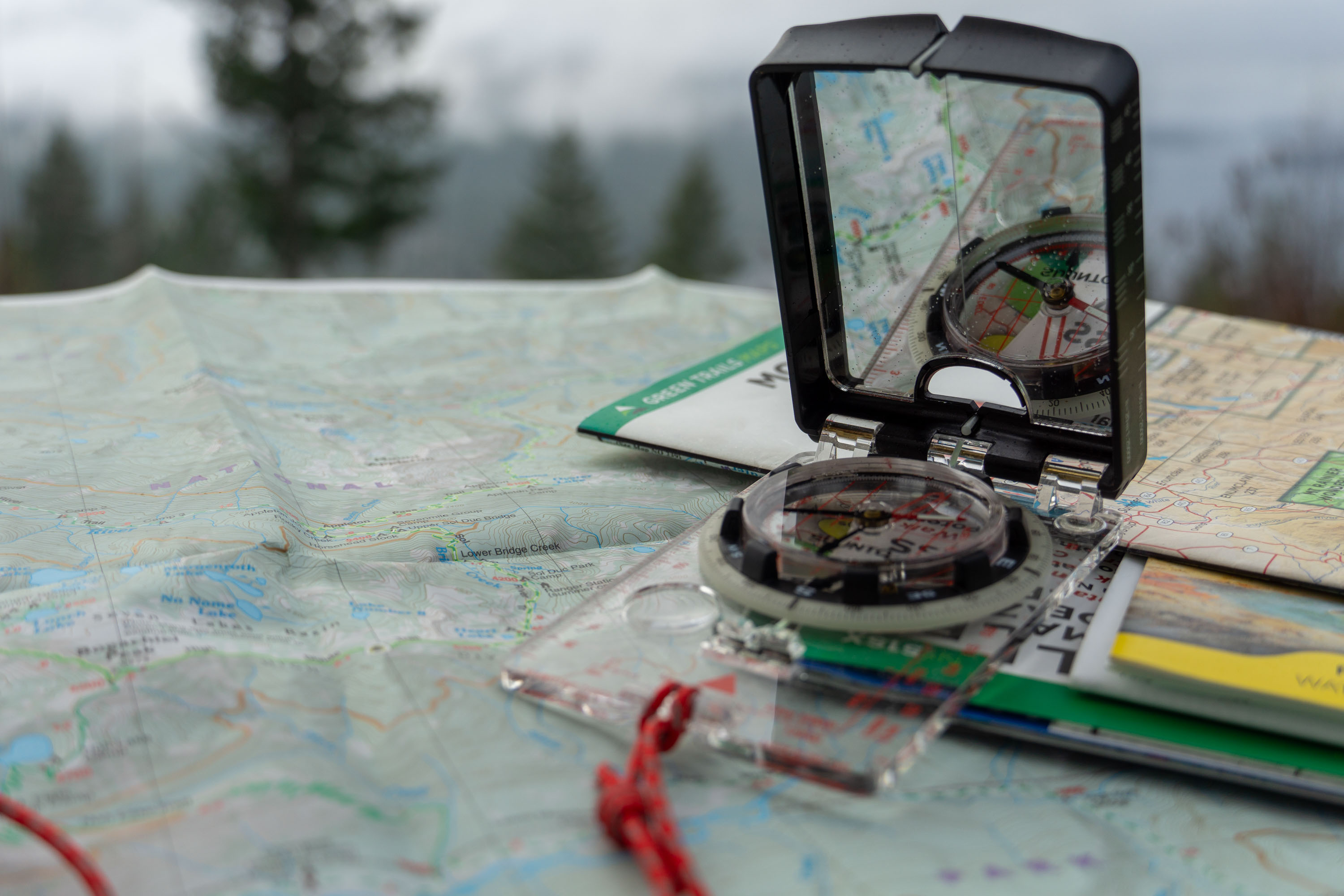
Orienting Lines
Fixed within the housing, these lines are designed to align with the vertical grid lines on maps.
Orienting Arrow
Also fixed within the housing, the orienting arrow aligns to the magnetic north.
Direction-of-Travel Arrow
Fixed parallel to the sides of the baseplate, the direction-of-travel arrow shows the direction you want to travel.
Index Line
Fixed on the bezel. The index line is an extension of the direction-of-travel arrow. It marks the direction you set via rotating the housing.
Magnifier
Many baseplates feature a small magnifying lens for easier map reading.
Compass Scale
Located on the edges of the baseplate, the scale allows you to measure the distance on maps.
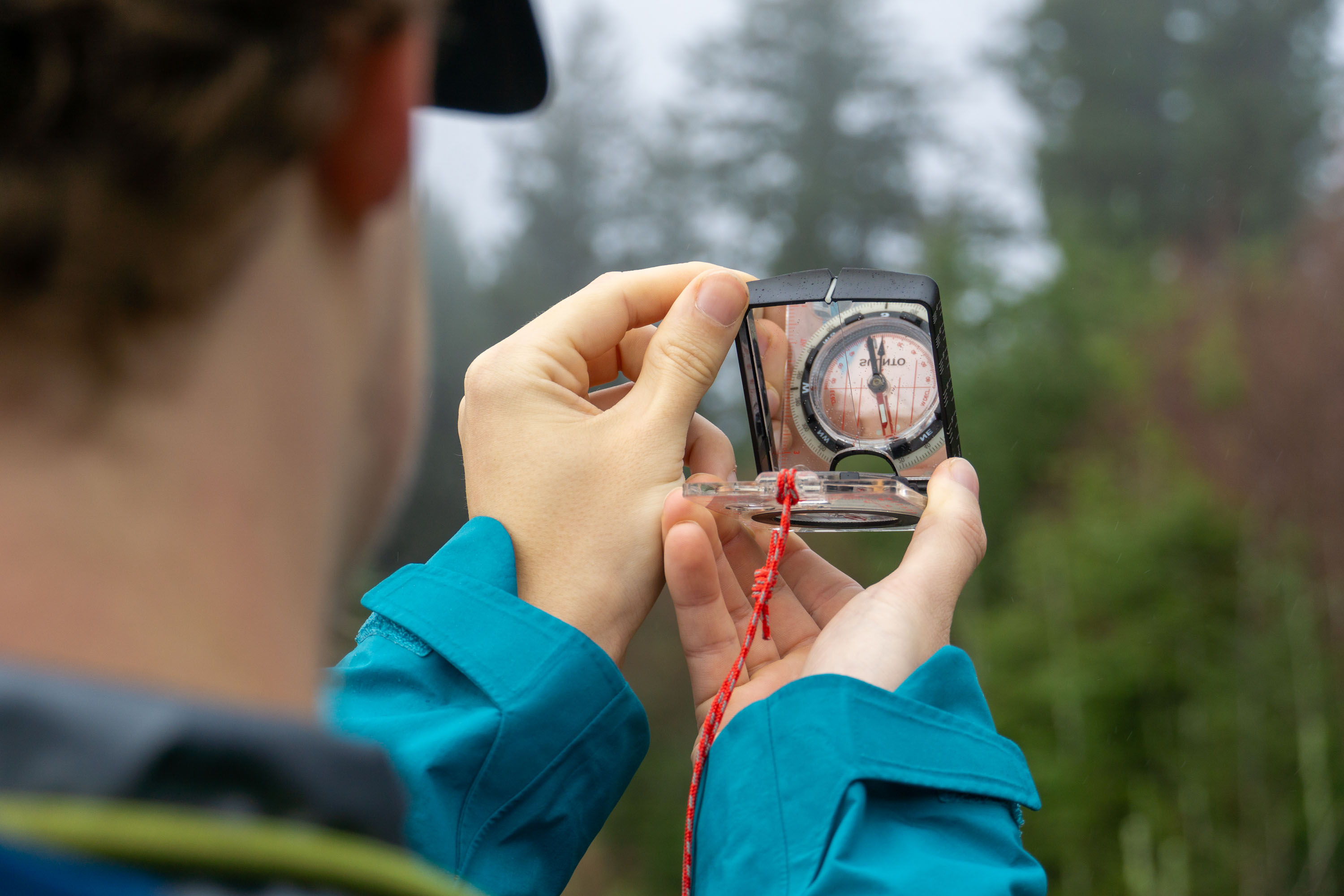
Key Features & Considerations
In addition to the basic features mentioned above, these additional features can make navigation easier or more accurate. They allow you to measure height and slope and to find north on any part of the globe.
Declination Adjustment
Declination adjustment allows you to adjust your compass for the varying difference between magnetic north and true north. Magnetic north (where the needle points) follows the direction of north in the Earth’s magnetic lines, and true north represents the direction of the North Pole.
Magnetic declination varies from place to place due to the changing nature of the Earth’s core. To compensate, many allow you to adjust your compass readings to accommodate the magnetic declination for your location.
Sighting Mirror
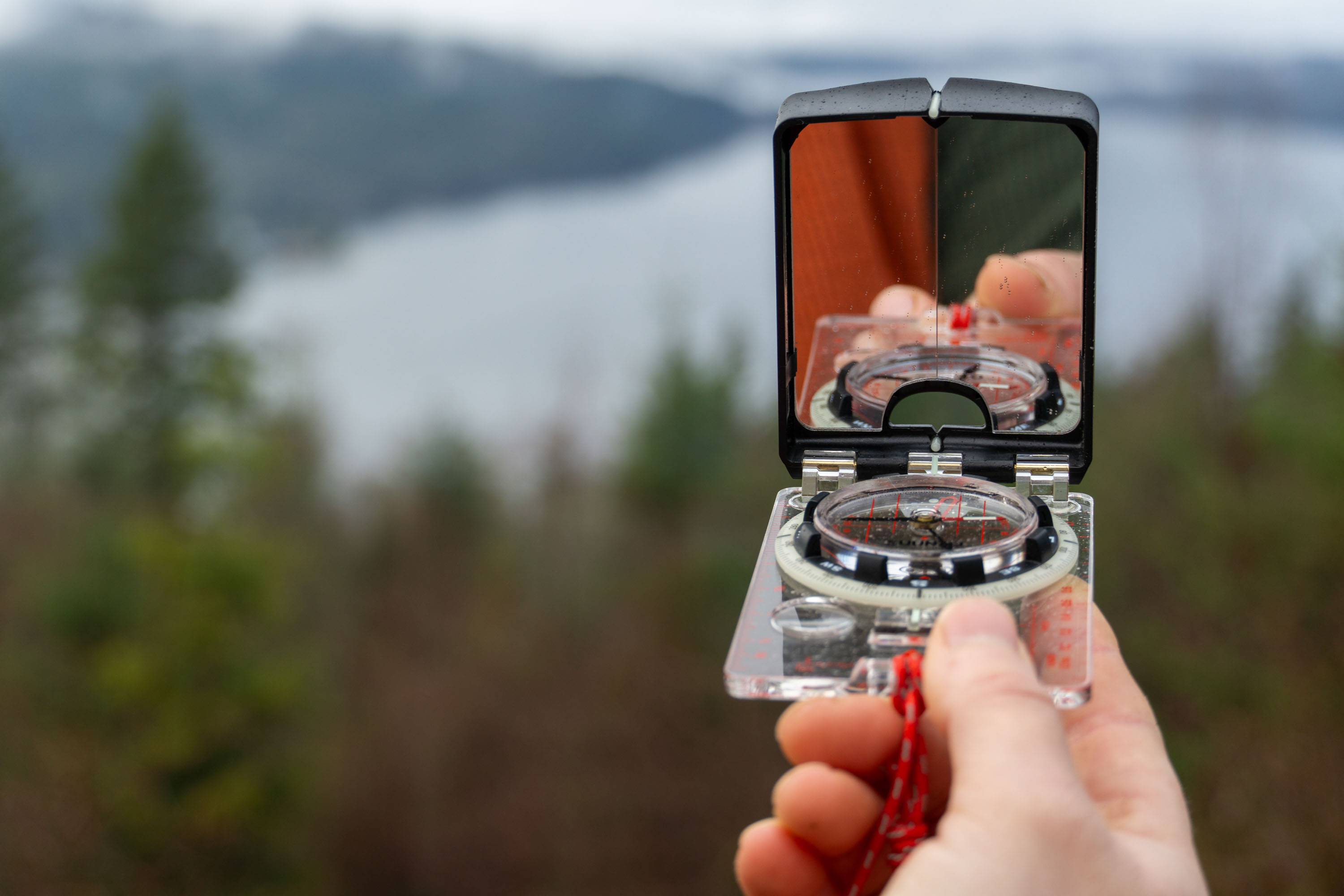
Sighting mirrors are mirrors on a hinged lid that attach to the body. They allow you to see a direction or an object and your compass capsule at the same time. Therefore, using a product like SUUNTO’s MB-6G, which has a sighting mirror, allows you to orient your direction to a location and maintain that direction even when you can’t see the marker.
Clinometer
Clinometers measure the angle of elevation, the slope, or the height from the ground. Clinometers measure the height of objects and the steepness of hills (useful in avalanche terrain). They also gauge the height of your bear hang when you’re setting up camp. The Brunton TruArc 15 and SUUNTO’s MB-6G have inclinometers making them highly suited for winter adventures where you’ll be evaluating surrounding avalanche terrain and using slope angle to help determine where it’s safe to ski.
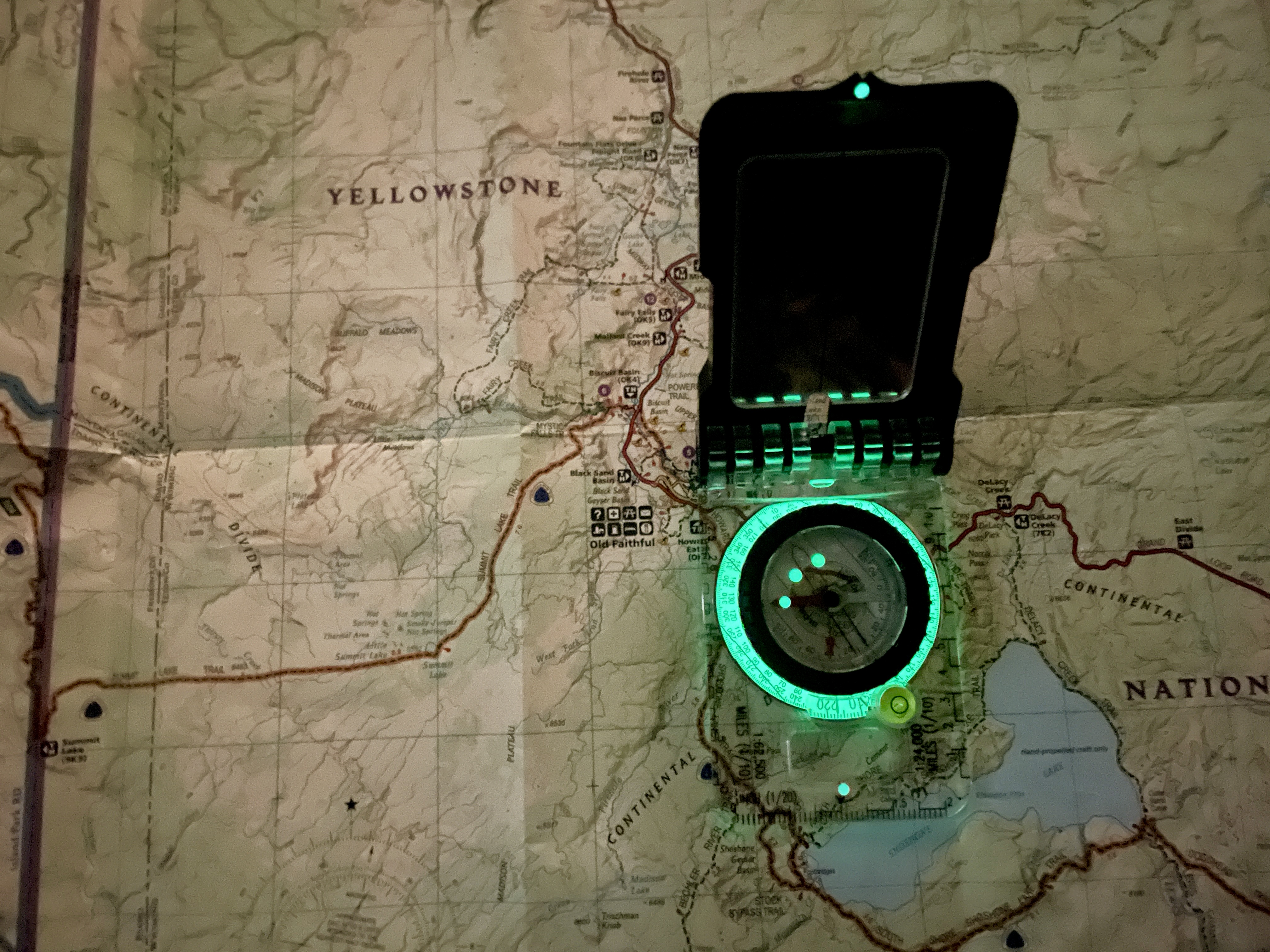
Global Needle
Because the Earth’s magnetic field varies in different locations on the planet, a needle that balances well in one location may dip and drag or stick in a different location, making it completely useless. One with a taller dial allows the needle to tilt without hitting the casing, preventing that drag. If you’ll be navigating globally, choose one like Suunto’s MC-2, which finds magnetic north in both the Northern and Southern hemispheres.
Compass Storage
In the past, caring for a compass would just mean not dropping it or crushing the casing. Now, people need to consider the plethora of electronic devices that can threaten a product’s lifespan. Be sure to store it away from computers and other electronic devices — the magnetic fields can damage it.
The speakers in these devices can demagnetize the needle, rendering it useless. Also, keep it away from fires, heaters, and other hot places like a hot car. Any warping of the casing can affect the needle’s accuracy. Also consider how you will use it while you’re out in the wild. if you need super quick access, consider the SUUNTO AIM-6 NH, which is ideal for racers or others moving quickly through the landscape.
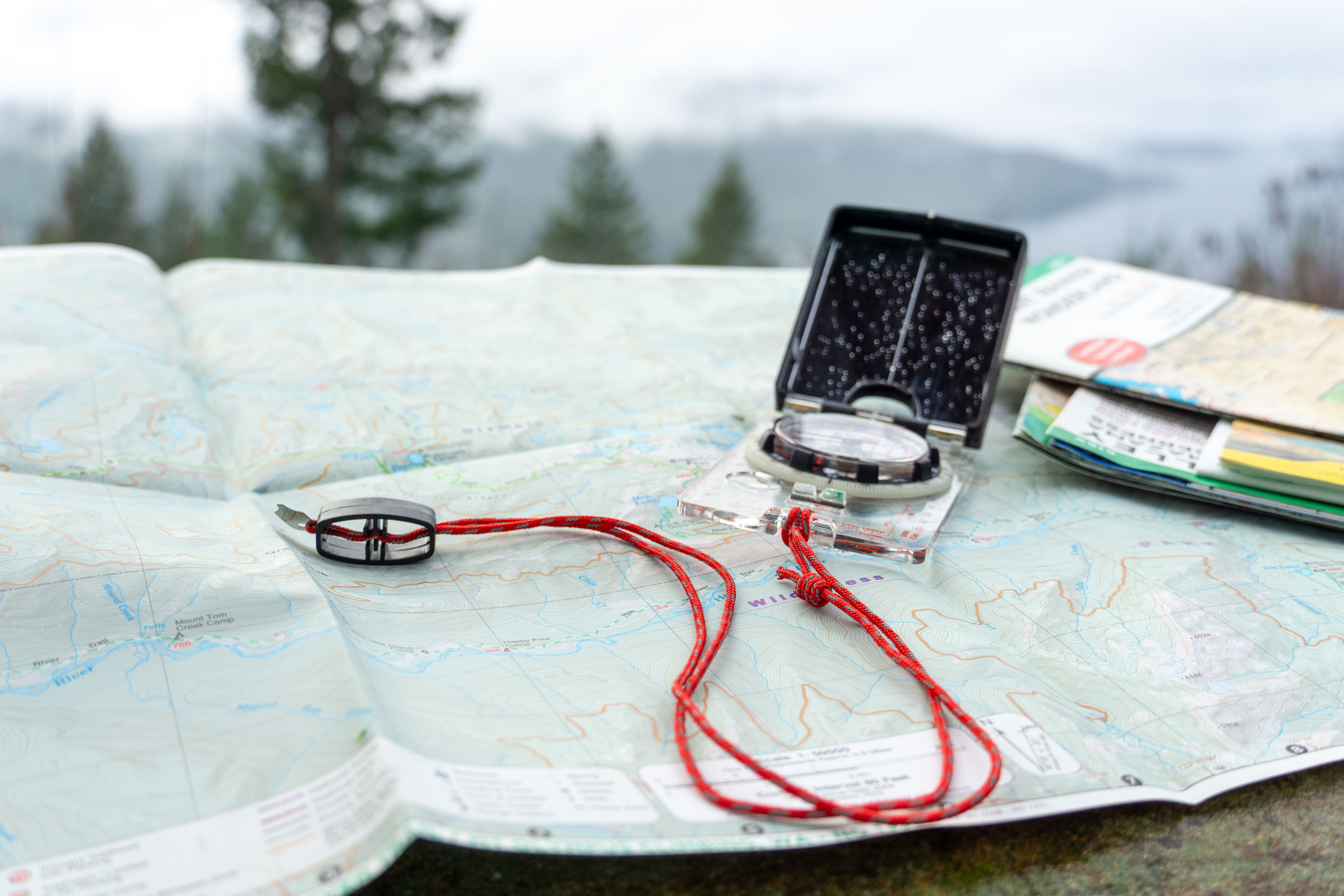
Price & Value
Compasses on our list range from $12 to $115. This is a big range in price for a piece of gear that’s supposed to do the same thing: help you navigate. Pricier ones tend to come with more bells and whistles, so you’ll need to decide what features are important and what you will actually use and need out in the field. No matter how inexpensive or pricey the one you choose may be, it needs to work quickly and consistently.
Budget
If you’re looking for one under $40, there are countless options, but some are better than others. The SUUNTO A-10 ($24), our top budget pick, meets most needs for general navigation. Though it doesn’t have a ton of bells and whistles, it has always delivered in finding north quickly and reliably over years of testing. The TurnOnSport Orienteering ($12) has only the necessary features and is perfect for someone learning navigational skills.
Mid-Tier
Compasses in this tier range from $40 to $90. Our overall pick, the M-3 D Leader ($65), is an ideal mix of features and ease of use. It’s balanced for use only in the northern hemisphere. And, while it has a baseplate with a magnifying lens and glow-in-the-dark markings that make it easy to use even in low light, it doesn’t have a ton of features that will overwhelm a casual user.
[ Others within this category, like the SUUNTO AIM-6 NH ($70), may have specialized uses; the AIM-6 is a thumb compass meant for racing and orienteering, where you need to move quickly while having your compass at the ready.
Premium
Higher-end compasses ($95) and above often come with more tools and features. For instance, the SUUNTO MC-2 Global Compass ($95) can find true north in both the northern and southern hemispheres. It also has a slope indicator tool ideal for winter use in avalanche terrain.
A declination tool, magnifying lens, luminescent markings for low light, and a huge mirror that helps with navigation but can also be used for signaling in an emergency elevate this one above others in terms of features. But, unless you’re an experienced navigator, premium options may be overwhelming and too much for what you need.
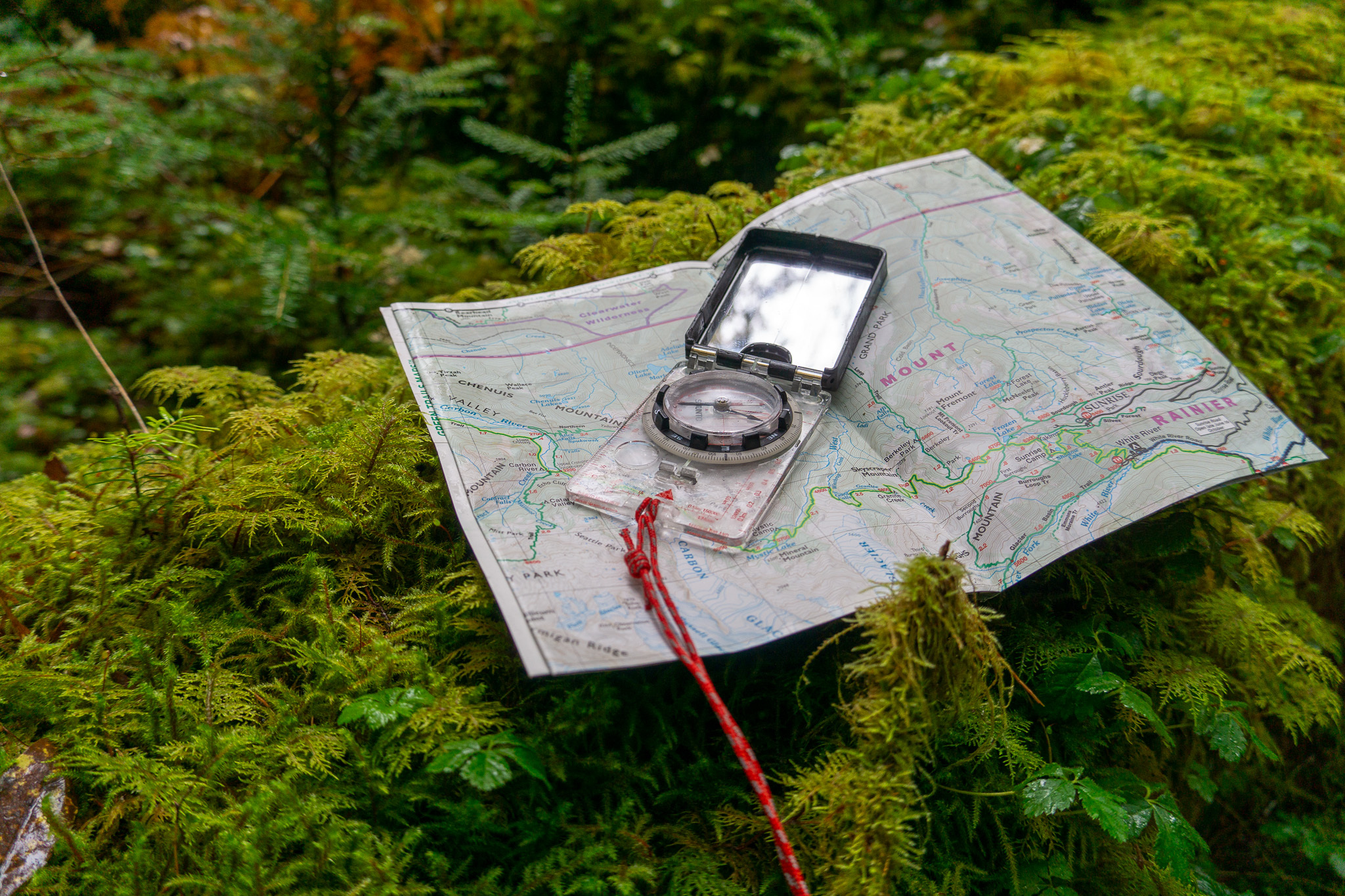
Frequently Asked Questions
The most accurate compass depends on several factors. Most importantly, you should know how to use it. Every compass can find north, but it’s up to you to know what to do with that information.
Your ability to read your bearings and follow them, or transfer a compass’s information to a map to find your location and put it to use accurately, is paramount. For more information on how to get the most out of your compass, check out our article on orienteering basics.
A good compass can cost anywhere from $10 for a simple compass with basic orienteering features to over $100 for a compass with a global needle, clinometer, mirror sight, and a plethora of other features. Consider the features you need versus what you’re willing to pay when choosing the best compass for you.
In addition to the standard needle and rotating bezel, look for a cover with sighting wire and luminous lighting dots for evening navigation, a flip-up sighting slot and lens (or rear sight), and a thumb loop for stability while sighting your visual marker.
Although a good lensatic compass is great for finding bearings, we prefer one that also incorporates the features of a baseplate compass. Look for a compass that combines the two to give you several methods of finding your way.
While compass apps may be less accurate than traditional compasses and rely on a battery, they’re very convenient. Most people already have their phones with them on adventures, and smartphones can sport a wide range of features that a traditional compass does not, like barometers, altimeters, and, of course, GPS.
We’re fans of the Gaia GPS app (free for iOS and Android) because of its map integration, which allows you to use topo maps, aerial photos, or a hybrid of the two. It also shows your altitude, allows you to share that data to keep others informed of your location in case you get lost, and tracks data like speed, time, location, and direction. It can also estimate your GPS accuracy to let you know if you start going off course.
Remember, if you’re relying on an app for navigation, you’re also counting on the performance of the technology. We recommend always having a traditional compass on hand in case your phone ends up at the bottom of a lake.

The Best Handheld GPS of 2025
There’s no need to rely on your smartphone or smartwatch for navigation. We rounded up the best handheld GPS devices for finding your way.

The Best Satellite Messengers of 2025
Failure isn’t an option when it comes to choosing a satellite messenger. When you absolutely need to get the word out, here are the best sat messaging devices in 2025.


